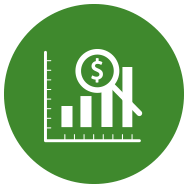Why is Health Care so Expensive?
Unfortunately, there is no single way to look at health care cost drivers. Cost drivers can be approached from many directions (see Table), adding confusion to any discussion about rising costs. As a result, multiple explanations for rising health care costs can be true simultaneously. For example, it is perfectly correct to say that rising costs are associated with increasing rates of obesity (health condition driver), higher spending on new treatments (line item driver), and hospital market power (policy) but these explanations could all be referring to the same spending.
Table: Cost Drivers Take Many Forms
| Type of Cost Driver | Description |
| Segment Drivers | Highlights segments of the health care industry where spending has been increasing, like outpatient care. |
| Demographic Drivers | Measures of the population, society, and general economy that appear to result in more spending on health care, like the aging of the population or increases in per capita income. |
| Health Condition Drivers | Measures of illness or other health conditions that have changed over time in excess of general demographic trends, like the increasing prevalence of diabetes. |
| Line Item Drivers | Increasing amounts actually being spent by health care providers in their operating budgets, like increased spending on new medical technology. |
| Policy Drivers | Public policy and health system practice can contribute to the cost of health care, like allowing hospital consolidations that result in near monopolies. |
Adapted from Doug Hall, Will the Real “Cost Drivers” Please Stand Up? The Problem of Identification, November 2004.
In a 2010 report, the Institute of Medicine (IOM) concluded that no single issue dominates health care spending growth, and that it is the result of multiple forces at play in a fragmented delivery system. We agree. But to cut through the clutter, consider these key take-aways:
- Focus on trend, not level of spending. Many health care economists believe that we need to focus on the rate of spending growth. If we lower the level of spending but don’t alter the factors that lead to a high rate of growth, we’ll eventually have high levels again. Few would object to addressing both the level and the rate of growth, but failing to focus on growth would be unwise.
- Rising unit prices are driving our health care spending growth, and increased utilization is a less important factor. This distinction is important. If we adopt policy strategies that only address the utilization of services, we will still have unsustainable spending.
- Many oft-mentioned cost “drivers” account for very little of our year-over-year growth in spending. Minor cost-drivers include Aging of the Population, Direct-to-Consumer Advertising, Mandated Benefits, Malpractice Expenses and Prevalence of Smoking. These cost drivers account for an extremely small share of spending and don’t contribute to high trend.
- There is widespread agreement that important cost trend drivers are: Advances in Medical Technology, Chronic Disease Prevalence, Obesity and Provider Market Power.
- The evidence is mixed or hard to measure with respect to spending on defensive medicine and fraud & abuse.
- The remaining oft-cited drivers are sizable segments of our health are spending but don’t appear to make driving overall trend: Waste in the system, including excess administrative costs and end-of-life care.







